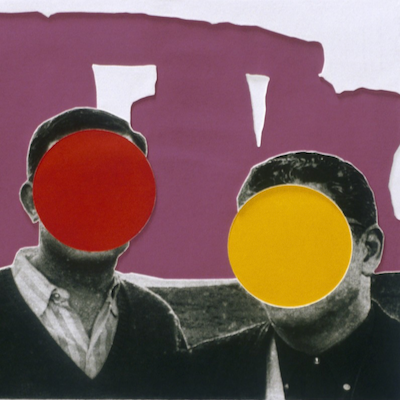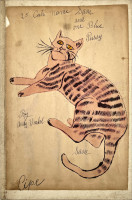Bruce McLean
Bruce McLean (UK, 1944) is a leading contemporary artist known for his irreverent approach to sculpture, painting, and performance art. A founder of the New Art Practice movement, his work challenges traditional art forms with humor and wit. McLean’s innovations have significantly influenced British conceptual and contemporary art.

Artwork by John Baldessari
What is conceptual art?
Sometimes referred to as Conceptualism, this is an art form where the idea(s) or concept(s) behind the work take precedence over material concerns and traditional aesthetics. Many conceptual artworks can be created by anyone simply by following written instructions. The concept or idea is the most essential aspect of the artwork.












